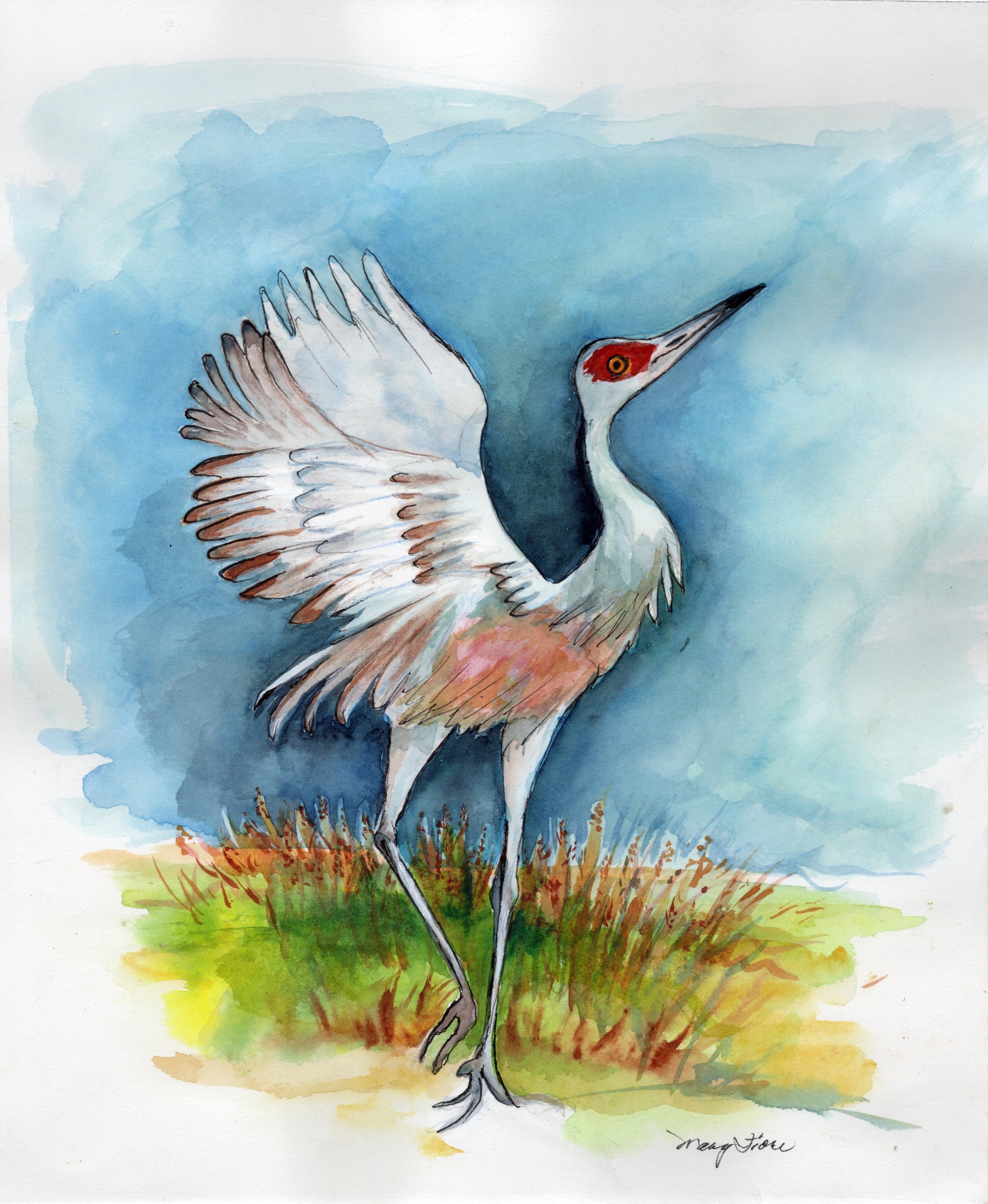In honor of the 2022 annual autumn migration of the Sandhill Cranes, we are happy to announce the release of beautiful prints of these magnificent birds. The paintings were generously commissioned by one of our most enthusiastic supporters, Nancy Vaughan.
Artist Mary Fiore was commissioned to create one image for us and she ended up doing three! We are very excited about how they turned out and will be sharing them in a variety of ways (through the sale of note cards, posters, apparel, etc.) and to further beautify Birdhouse Farm’s virtual and physical locations.
Let us know if you are interested and we’ll put you in touch with the artist (she doesn’t have a website).
Not only did Nancy underwrite the beautiful portraits, she wrote a fantastic piece on Sandhill Cranes and their activity in Quivira National Wildlife Refuge (26 miles from Birdhouse.farm). There is an excerpt below and you can find the full writing here.
The sandhill cranes that migrate through Kansas, and sometimes winter here, are part of the Mid-continent Population. This population is one of nine in North America and by far the largest with about 500,000 birds. The next largest populations number about 20-25,000 birds.
To learn more about their migration through Kansas, you can visit the Kansas Department of Wildlife and Parks website.
Celebration of the Cranes
Know a Bird - Sandhill Crane
By: Nancy Vaughan
Well-known to residents of Kansas, the sandhill crane is a twice-per-year migrant through the state, with Quivira National Wildlife Refuge being one of the very best locations in Kansas to see these majestic birds during their migration. Identifiable by their long necks, bills, and legs as well as their red crown, adult sandhill cranes will reach a height of three to four feet, weigh six to twelve pounds, and boast a wingspan of six to seven feet. Although they are estimated to live 15 to 40 years in the wild, they can live twice that long in captivity. They are the most common crane in North America, and the second-tallest bird on the continent, whooping cranes being the tallest. Flocks can have as many as 500 birds, although the norm is 200 to 300. Cranes take advantage of tail winds and thermals, the rising columns of warm air, during their long migration. Cranes are so proficient at riding thermals that they have been seen flying over Mt. Everest, the highest point on earth.
-

Audubon Society - Sand Hill Crane Overview
Found in several scattered areas of North America, Sandhill Cranes reach their peak abundance at migratory stopover points on the Great Plains. The early spring gathering of Sandhills on the Platte River in Nebraska is among the greatest wildlife spectacles on the continent, with over a quarter of a million birds present at one time.
-

Highlights from 2021 Celebration of Cranes
Audubon Society of Kansas’s 4th Annual Celebration of Cranes was held November 5-6 in Hudson, KS and at Quivira National Wildlife Refuge (QNWR). Highlights from the event are in the link below.
-

Virtual Crane Fiesta! 2022
If you are not able to travel for the Festival of the Cranes (12/1/22 to 12/3/22), or if you want even more festival content, join for the virtual Crane Fiesta! from 11/18/22 to 11/19/22 for photography professionals and expert birders right into the comfort of your own home.





